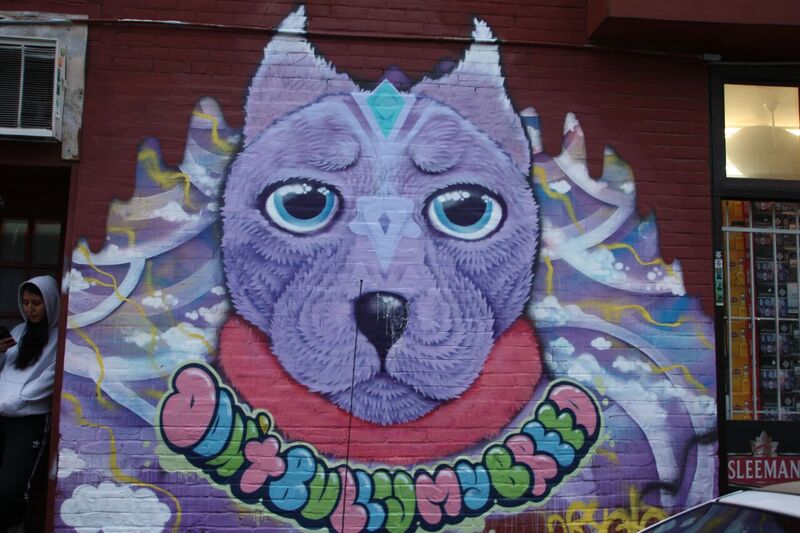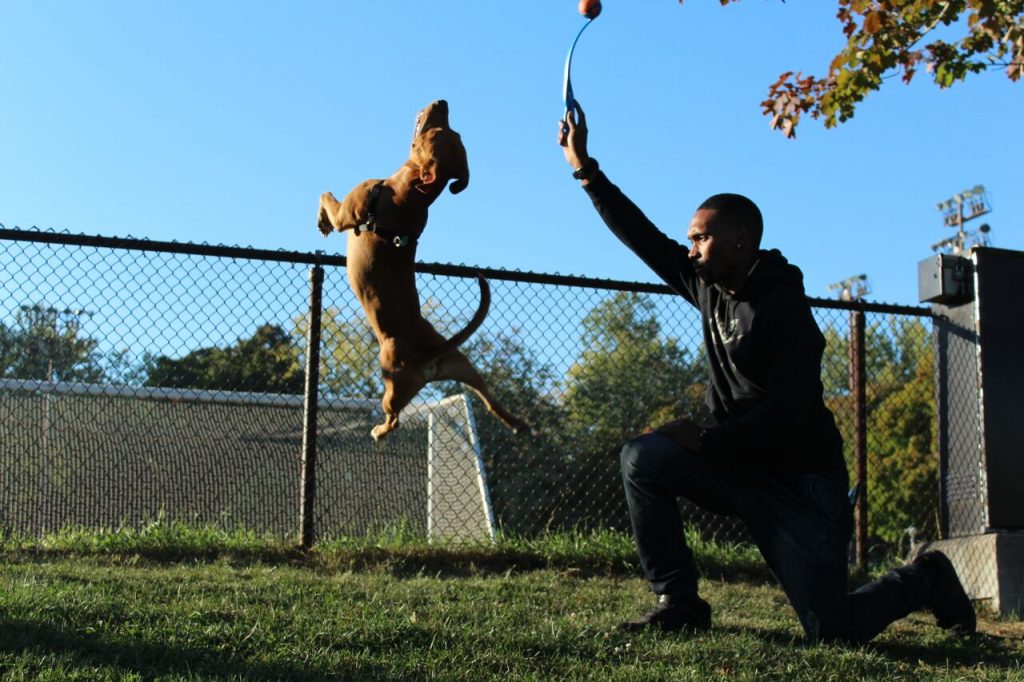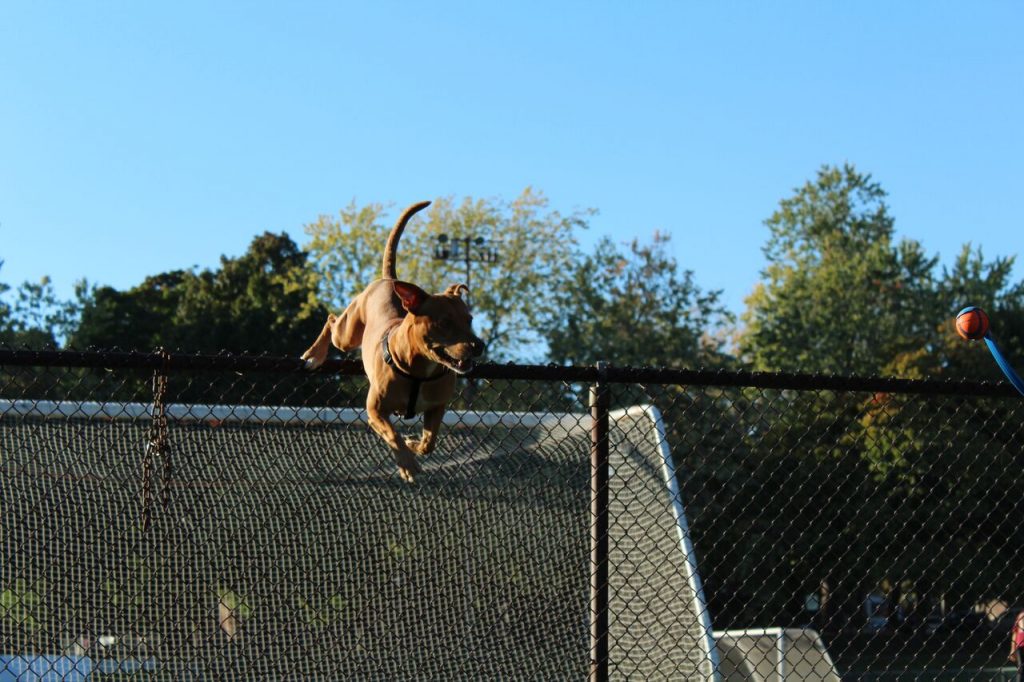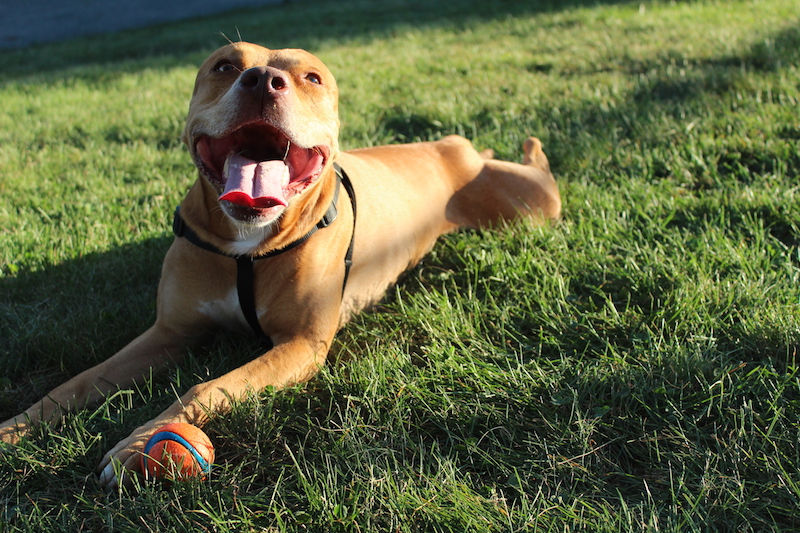The ban was lifted after nine days, leaving questions about whether the breed will be outlawed
Pit bull owner Nathaniel South expressed his worry of the complications he and his dog Chester would face if the temporarily lifted pit bull ban is reinstated. “What did my dog do? He’s been catching the ball and climbing fences. He never attacked anybody,” South said, addressing the generalizations about pit bulls that were made in Montreal after one incident this past summer when a woman was mauled and killed by a pit bull-type dog.
Society for the Prevention of Cruelty to Animals (SPCA) announced a victory on Oct. 5 following their lawsuit against the city in a press release issued, which stated the ban on owning pit bulls was halted in Montreal until further notice by the municipal court.

On Sept. 28, the Montreal city council voted to ban new ownership of pit bulls and pit bull-type dogs in Montreal. However, it only lasted nine days before Quebec Superior Court Judge Louis Gouin ordered the ban be temporarily lifted until further discussion. The ban will be discussed in a hearing where the Superior Court will consider the legality of the law.
In the press release, Animal Advocacy Department of the Montreal SPCA lawyer Sophie Gaillard said, “We are particularly delighted to be able to continue finding adoptive homes for all of our healthy and behaviourally sound dogs, regardless of their physical appearance.”

South said he’s had his pit bull-boxer and labrador mix, Chester, for approximately nine and a half years. He said he adopted Chester from the SCPA. “I never had problems with him,” said South.
Vice president of Concordia Animal Rights Association (CARA) Katherine Millington said although an outright breed ban is “an inappropriate, emotional, unscientific response,” however she does not completely disagree with the imposed laws.
“Spaying and neutering, as well as microchipping, will help to keep animal populations under control and ensure that lost animals get returned to their owners,” said Millington. She said sources such as the Canadian Veterinary Medical Association and the American Veterinary Medical Association have reported that breed-specific legislation is not an effective plan of action for dealing with fatal dog attacks. “The individuals responsible for this legislation refuse to listen to the experts in this field [which] makes me believe there is some ulterior motive for the ban,” said Millington.

South agreed pit bulls should be neutered and spayed. “When they’re not neutered, they can be a very dangerous dog,” said South. “That’s why I don’t disagree with the rule.” However, he said having to muzzle his dog would prohibit Chester from being able to play catch in the park. He said the muzzle also makes it hard for dogs to breathe and pant while they run around.
Barbara Kay, a columnist for the National Post, has stated she is in favour of the pit bull ban. Kay said when she was younger it was very uncommon for pit bulls to be domestically owned. She said pit bulls were formerly considered to be owned by bad people. “Pit bulls were considered the kinds of dogs that dog fighters used strictly for illegal dog fighting,” she said. Kay added that it was considered that trashy people owned these types of dogs. “They had them specifically because they were a tough bully dog and capable of inflicting serious injury,” she said.
However, Kay said there has been a change in the culture surrounding pit bulls—more often, they are viewed as misunderstood, often assumed to be more dangerous than they are. Kay said people began putting the blame of violent behaviour by pit bulls on a bad environment and unsuccessful owners.

“The purpose of [the legislation] is to eliminate fatalities and to reduce severe dog bites, those that require hospitalization,” Kay said, and those that cause blindness or an amputation.
South said pit bull owners need to be well-educated in order to properly care for this type of dog. This is why people with criminal records are prohibited from owning a pit bull, he said, because they could train these dogs to be dangerous and attack people.
Kay said that, much like what happened in Ontario, the ban is simply phasing out the ownership of pit bulls and pit bull-type dogs because the human ownership is an “invention” that is not working. She said she does not advocate for dog euthanasia, but instead is in favour of the protocol adopted in Ontario after the ownership of pit-bull and pit-bull type dogs were outlawed. She said whoever owned a pitbull was not forced to give up their dog, but could keep them.
Millington said the breed-specific legislation has proved ineffective time after time. Citing information she obtained from the Montreal Gazette, she said, “In the last 30 years in this province, five people have been fatally attacked by dogs, all of which would fall into the husky-breed category.”

“The stereotype around pit bulls is just a function of society’s mass hysteria,” Millington said. “Every few decades a new breed is deemed to be particularly aggressive and is alienated.” She cited in the past Dobermans, German Shepards and Boxer Terriers as all having been similarly prosecuted and deemed to be a dangerous breed of dog.
South compared the stereotyping of pit bulls to the racial stereotyping he faces with the Montreal police. In his comparison he referenced times when he was stopped by the SPVM while walking home from a bar because he seemed suspicious to the officers. “It’s almost like the same thing because once a pit bull [has done] something, they generalize it to all pit bulls and then all the pitbulls have to suffer,” said South. “In this world it’s all about stereotypes, people do things and then it screws up everything for everybody else and then you have to live like a caged animal,” he said.
South had Chester running free in the park and was not confronted by someone in fear or prompting South to muzzle or take Chester home. South said often people don’t recognize he is a pit bull since he is a smaller version of the breed. During the interview, three different dog owners in the park interacted with Chester and expressed their impression with Chester’s obedience and ability to do tricks such as flip when South played with him using the ball. South said their outlook on Chester’s training would be altered if they knew he was a pit bull.





Public safety is achieved when we can decreased the pit bull population from 5% to under 1% in a city.
Why should public safety depend on how someone raises their dog? There are irresponsible owners of poodles, beagles, greyhounds and I could name 300 dog breeds that will not lead to severely maimed or dead neighbors, pets and children. It shouldn’t be a death sentence for any of us to depend on all pit owners to raise their pit right. That’s impossible. If you think it’s how they are raised, then they should be regulated or banned.
The purpose of a pit bull ban is not to prevent bites, but to prevent maulings. Bites require band-aids or a few stitches; maulings require amputation, plastic surgery, rehabilitation therapy, and possibly caskets.
This issue has never been about which breeds bite the most. The issue with pit bulls is the degree of damage they inflict, and their attacks being more likely to result in fatality.
Well said!
Saying that fighting breed bans don’t work because people still get bit by other breeds would be like saying bans on machine guns don’t work because people get shot by handguns.
They shouldn’t be surprised when places want to ban pit bulls when they are not willing to compromise at all.
They fight mandatory spay/neuter of pit bulls, they fight mandatory micro-chipping, they fight laws requiring pit bull breeders to be licensed, they fight minimum fencing requirement laws, they fight laws requiring one to have a license to own a pit bull, they fight laws requiring fighting breeds to be muzzled in public, they refuse to encourage pit bull breeders to breed out fighting traits and to breed for temperament instead of giant heads or the propensity to latch onto a spring pole indefinitely, etc.
“Pit bull education” has failed, and it’s no surprise why. Instead of pit bull education consisting of truthful facts about the breed, such as what they were bred for and why it is so important to keep them locked up so they can’t escape, it consists of nanny dog myths, “America’s dog” myths, and contradictory statements.
For example, right now some pit bull advocacy groups are hosting pit bull kissing booths. Yet every time a child has their face ripped off by a pit bull, they claim, “Everyone knows you never put your face next to ANY dog!”
If the lack of a stop sign leads to a traffic fatality at an intersection, responsible people install a stop sign; they don’t wait until as many fatalities occur at this intersection as may have occurred elsewhere. The lack of a stop sign on the acquisition of pit bulls may have led to only one fatal dog attack in Montreal so far, but throughout the U.S. and Canada that same lack of a stop sign has led to more than 30 human fatalities inflicted by pit bulls and more 450 disfiguring maulings inflicted by pit bulls in each and every year of the present decade–which means that upward of 80% of the fatal and disfiguring attacks are inflicted by a breed type amounting to less than 5% of the total dog population. Of further note, more than 40 human fatalities since 2010 have been inflicted by dogs (31 pit bulls, eight bull mastiffs, and three Rottweilers among them) who had passed behavioral screening by animal shelters. By comparison, no dogs from shelters are known to have killed anyone from 1858 to 1988, and only five dogs from shelters had killed people before the current enthusiasm for rehoming pit bulls at any risk or cost began circa 2007.
pit bull problems